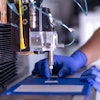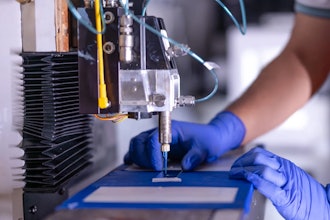
A new 3D printing technique could make metal structures about as easy to print as plastics, a newly published paper suggests.
The research team, led by Yale engineer Jan Schroers and Massachusetts-based Desktop Metal, focused on materials known as bulk metallic glasses, which feature a “super-cooled liquid region” in their thermodynamic profile — and are therefore able to be softened when heated.
Scientists heated millimeter-thin rods of a BMG comprised of zirconium, titanium, copper, nickel and beryllium, then forced the softened fibers through a 0.5-mm nozzle. The resulting stainless steel mesh did not crystallize for at least a day, after which a robotically controlled extrusion process created a finished metallic structure.
Most metals cannot be easily extruded by a printer, and conventional 3D metal printing uses a powder bed fusion process, which requires a highly localized heating source and complex, expensive equipment, the researchers noted.
"We have shown theoretically in this work that we can use a range of other bulk metallic glasses and are working on making the process more practical- and commercially-usable to make 3D printing of metals as easy and practical as the 3D printing of thermoplastics," Schroers said in a press release.
Although the technique could be applied to a wide range of engineering and manufacturing challenges, engineers said a more practical feedstock and a more reliable bonding process would be needed to put it into practice. The alloy used in the study, however, is considered to be “a well-characterized and readily available BMG material.”
The research was published in the journal Materials Today.






















